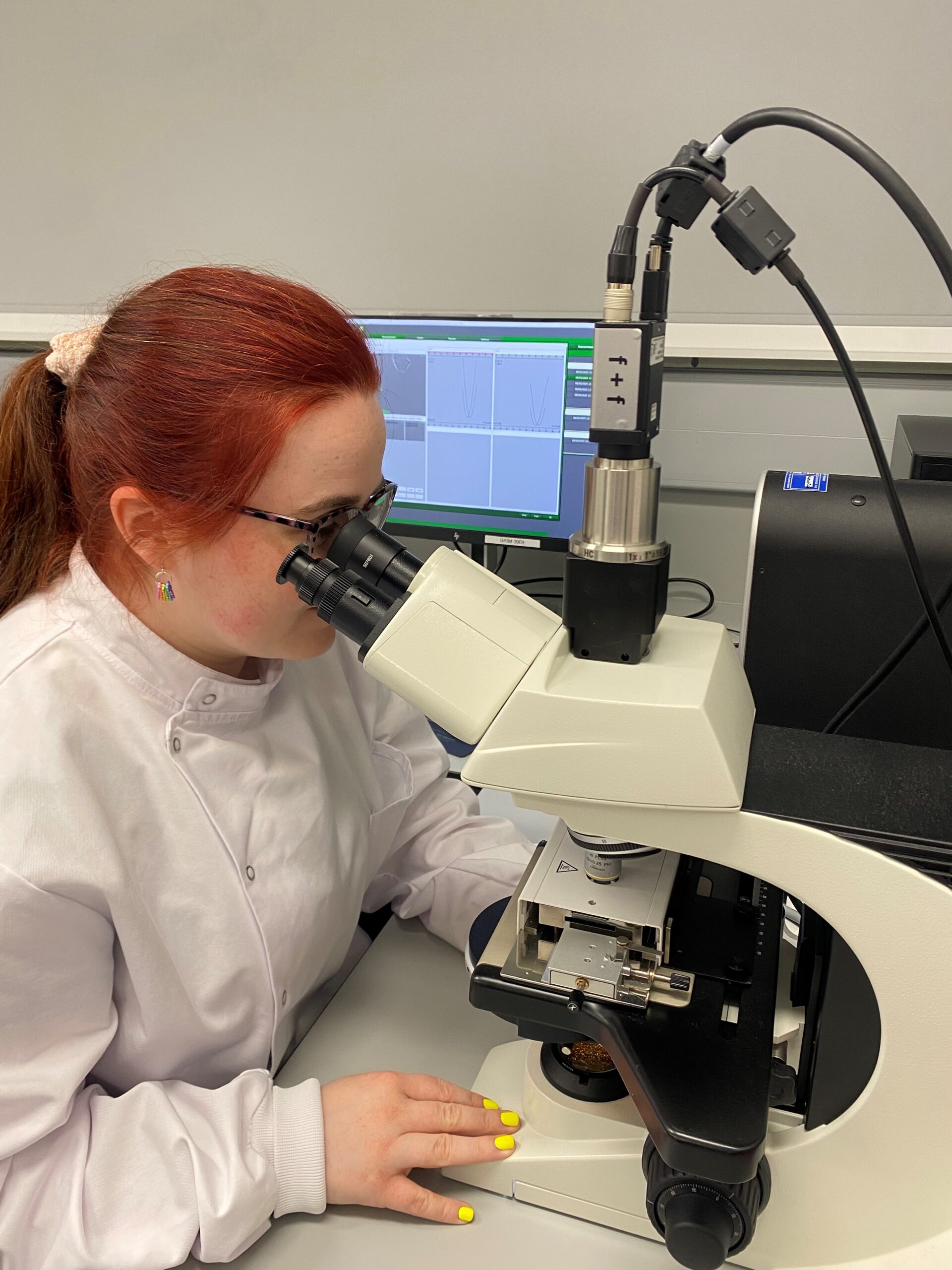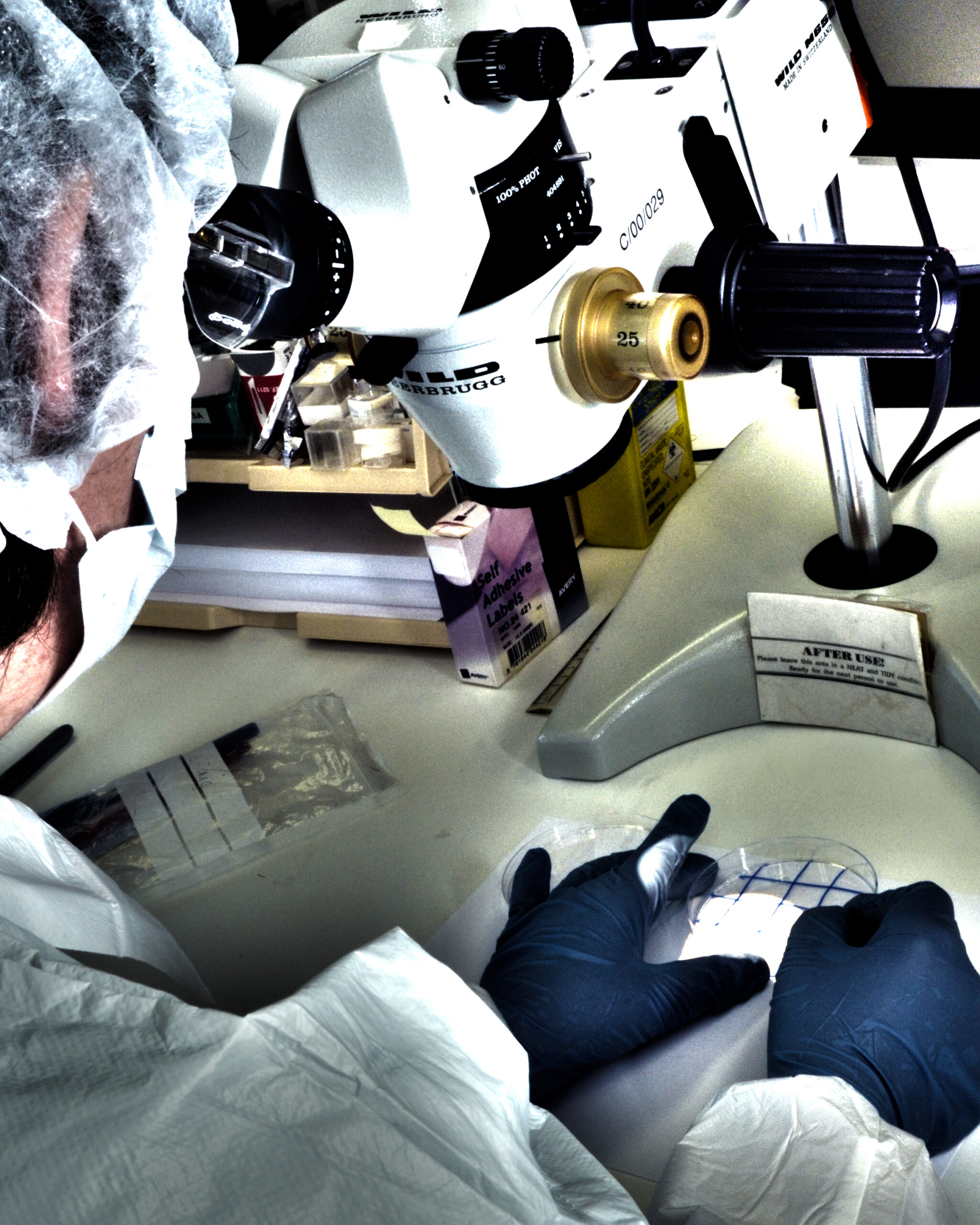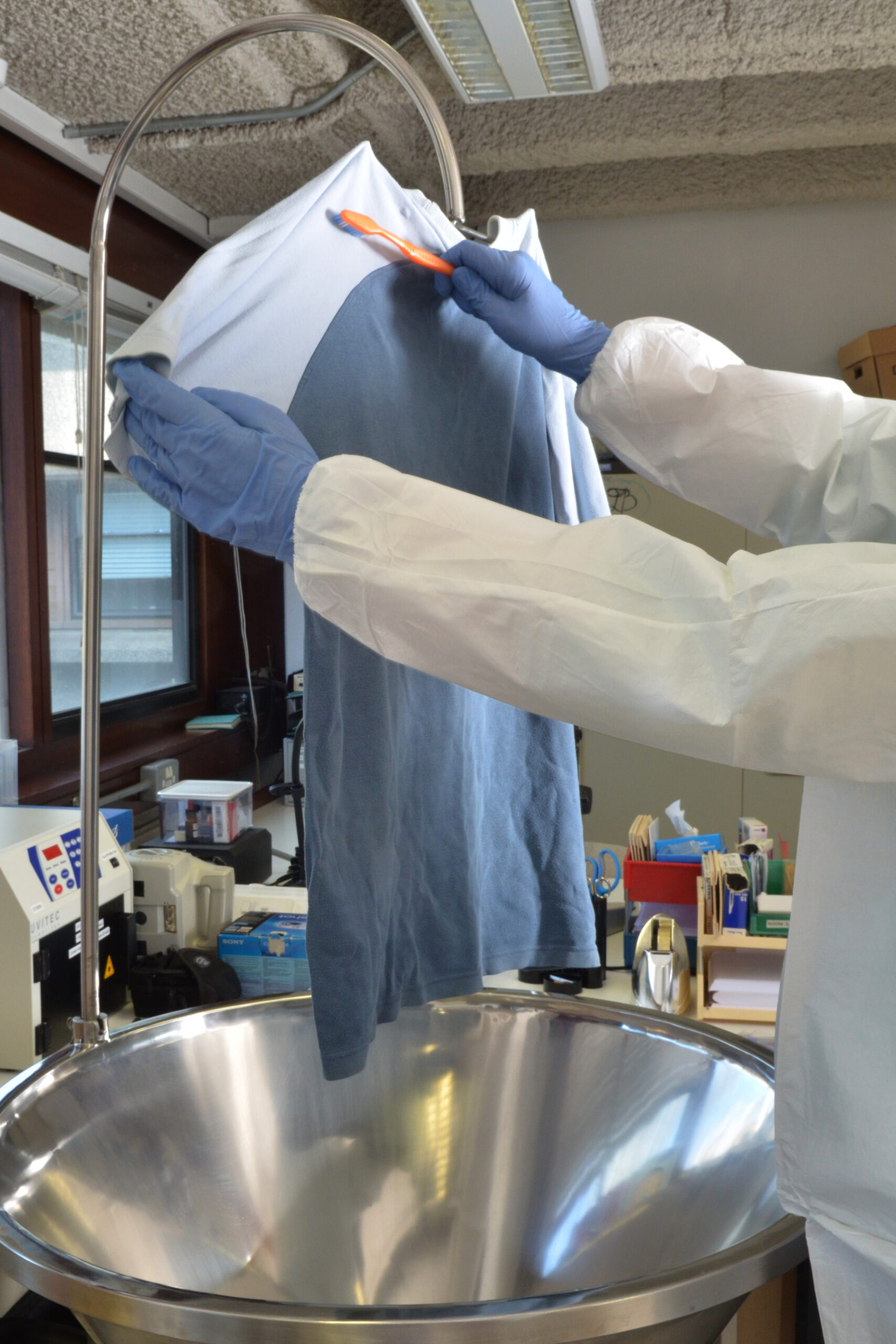Fig.1
Glass Analysis


Fig.2

Fig.3
GLASS
Glass evidence is frequently encountered in crimes such as burglaries, hit-and-run accidents, and other incidents involving breakage of glass objects. For example, if a window is smashed during a break-in, most of the glass will shatter inward into the building, but some small fragments can fly back toward the perpetrator. Those fragments may stick to the suspect’s hair or clothing. In a hit-and-run scenario, shattered headlight or windshield glass from a vehicle might be found on a pedestrian victim’s clothing. In such cases, investigators collect clothing or other items from suspects and victims and examine them for glass fragments that could link an individual to the crime scene.
Forensic glass analysis primarily involves comparing recovered glass fragments (from a suspect or scene) with a known source of glass (such as the broken window or headlamp). One key measurement is the refractive index (RI) of the glass. The RI is a numeric value that describes how light bends as it passes through the glass, and it depends on the glass’s chemical composition. In the lab, tiny glass shards are examined under high-powered microscopes and through specialized equipment that determines the refractive index. Glass fragments are also evaluated for physical characteristics like colour, thickness, surface features and thermal history
By examining these properties, forensic experts can address questions such as: Was glass from the crime scene present on the suspect? Was an implement used to break the glass? Do the glass pieces come from the same source? Additionally, the pattern of glass breakage can sometimes help reconstruct the incident (for instance, determining the direction of force or the entry point in a window). The process of glass analysis typically involves side-by-side comparison of the evidence and reference samples. Scientists will measure and compare properties such as colour, thickness, and refractive index of the glass fragments from the suspect versus those from the scene.
A specialized instrument called a Glass Refractive Index Measurement (GRIM) is often used to precisely determine the refractive index of glass fragments and see if they match.
